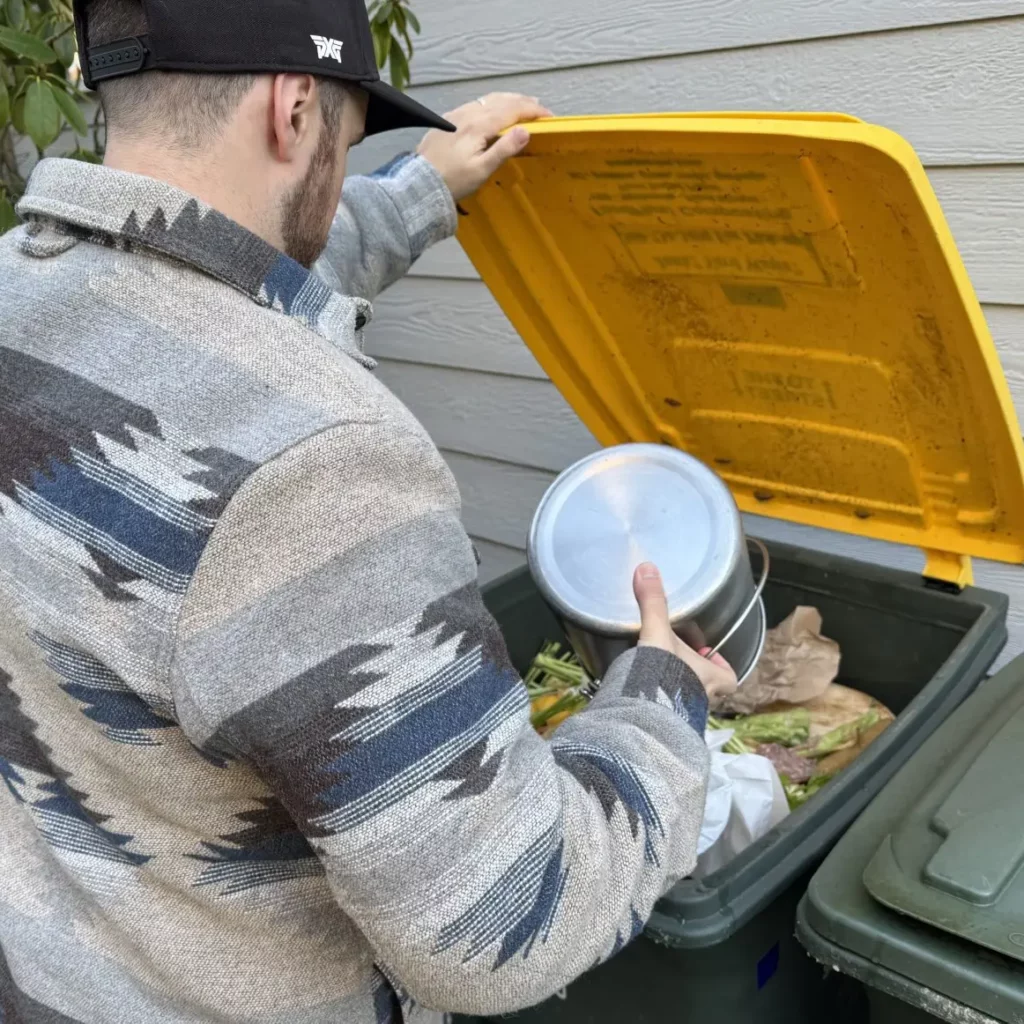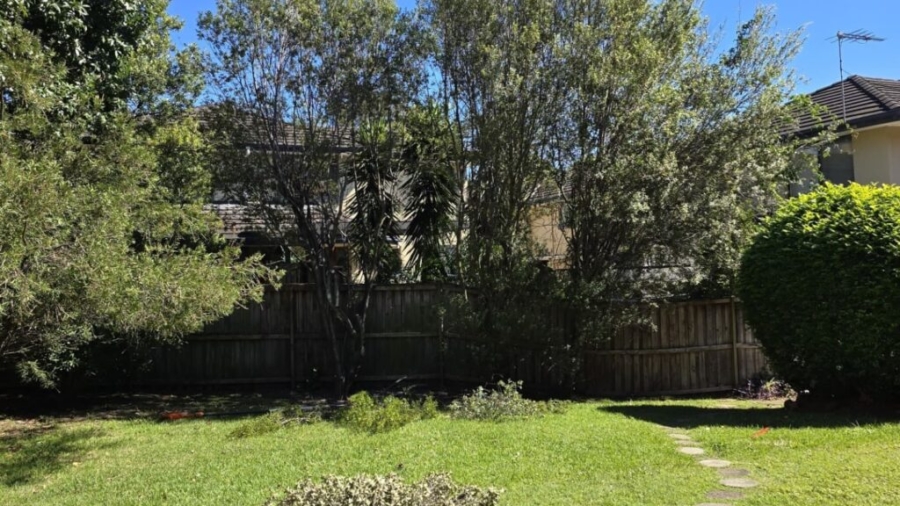What is Green Waste Removal in Sydney and Why Does It Matter for the Environment and Culture?
Green waste removal Sydney services collect, dispose of, and recycle organic garden materials such as tree branches, leaves, grass clippings, and pruning debris. These professional green waste removal Sydney services transform yard waste into valuable resources like mulch and compost rather than sending it to landfill.
The clean landscape cultural value extends far beyond aesthetics. For Sydney’s Aboriginal communities, maintaining pristine landscapes represents a fundamental connection to Country—a custodial relationship spanning thousands of years. When green waste accumulates or illegal dumping occurs, it damages sacred sites, contaminates water sources, and disrupts the natural ecosystems that Aboriginal people have protected for generations.
Environmental benefits run parallel to cultural preservation. Proper green waste removal Sydney practices prevent organic materials from decomposing in landfills where they release methane, a potent greenhouse gas. The recycling process creates nutrient-rich compost that enriches soil health and supports sustainable gardening practices across Sydney’s suburbs.
Key benefits include:
- Reduced landfill burden through systematic recycling
- Protection of cultural heritage sites from contamination
- Lower greenhouse gas emissions
- Preservation of natural water flows and bushland regeneration
- Support for Aboriginal communities’ environmental stewardship
The intersection of green waste removal Sydney services with cultural values demonstrates how modern waste management can honour traditional land care practices whilst addressing contemporary environmental challenges.

What Types of Organic Garden Waste Are Collected During Green Waste Collection in Sydney?
Green waste collection in Sydney accepts a comprehensive range of organic garden waste materials from residential and commercial properties. The service handles everything from small pruning debris to substantial landscape waste.
Standard items collected include:
- Tree branches and limbs – from minor prunings to larger structural cuts
- Leaves and foliage – both fresh and dried seasonal leaf fall
- Grass clippings – from regular lawn maintenance
- Weeds and unwanted plants – including root systems
- Shrub and hedge trimmings – from routine garden upkeep
- Wood chips and bark – natural garden mulching materials
- Turf and sod – removed during landscaping projects
- Tree stumps and logs – from tree removal work
The collection process specifically targets biodegradable materials that can be transformed through composting and mulching. This focused approach to organic garden waste ensures maximum recycling potential whilst keeping contaminated materials out of the eco-friendly processing stream.
How Do Eco-Friendly Processes Like Recycling Green Waste Benefit the Environment?
Recycling green waste Sydney services transform organic materials into valuable resources rather than letting them decompose in landfills where they release methane—a greenhouse gas 25 times more potent than carbon dioxide. When green waste reaches landfills, the anaerobic decomposition process creates significant environmental harm that proper recycling completely avoids.
The recycling process converts collected organic materials into two primary products: mulch and compost. Mulch returns to gardens and landscapes as a natural soil protector that retains moisture, suppresses weeds, and regulates soil temperature. Compost enriches soil with nutrients, improving plant health without synthetic fertilisers that can contaminate waterways.
Environmental benefits of green waste recycling include:
- Reduced landfill volume: Organic waste accounts for roughly 30% of household waste, meaning recycling significantly extends landfill lifespan
- Lower carbon footprint: Processing green waste locally eliminates methane emissions and reduces transport-related pollution
- Soil regeneration: Compost restores degraded land and supports native vegetation growth
- Water conservation: Mulch reduces irrigation needs by up to 50% in garden beds
- Circular economy: Organic materials cycle back into the ecosystem rather than becoming waste
Sydney’s commitment to zero waste principles means every branch, leaf, and grass clipping collected serves a purpose. The sorting process at recycling facilities ensures maximum material recovery, with even woody debris becoming habitat logs for wildlife or biomass for energy production.
Where Can You Access Green Waste Removal Services Across Different Suburbs in Sydney?
Green waste removal services operate throughout Sydney’s metropolitan area, ensuring residents across all regions can access eco-friendly disposal options. Coverage extends to major residential zones where garden maintenance generates regular organic waste.
Service areas include:
- Eastern Suburbs – Bondi, Randwick, Woollahra, and surrounding coastal communities
- Northern Beaches – Manly, Dee Why, Mona Vale, and peninsula locations
- North Shore – Chatswood, Mosman, Lane Cove, and upper harbour suburbs
- Inner West – Marrickville, Leichhardt, Newtown, and adjacent areas
- Hills District – Castle Hill, Baulkham Hills, and north-western growth centres
- Sutherland Shire – Cronulla, Miranda, Engadine, and southern regions
- Western Sydney – Parramatta, Blacktown, Penrith, and outer metropolitan zones
Volume-based pricing with transparent fees makes green waste removal suburbs Sydney accessible to households and businesses alike. Multiple payment options accommodate different budgets whilst maintaining the commitment to diverting organic materials from landfills. Prompt collection schedules ensure garden waste doesn’t accumulate, supporting both neighbourhood aesthetics and the broader environmental goals that underpin sustainable waste management across the city.
Why Is It Culturally Significant for Aboriginal Communities to Have Clean Landscapes Free from Illegal Dumping?
Clean landscapes are crucial for Aboriginal communities as they are the foundation of their cultural heritage. For over 60,000 years, Aboriginal people have had a custodial relationship with the land, which is often referred to as “Country.” This connection is not just physical but also spiritual, and it is maintained through practices such as ceremonies, gatherings, and traditional activities that require undisturbed natural environments.
Unfortunately, illegal dumping poses a direct threat to this relationship. When waste is disposed of improperly, it contaminates sacred sites where important cultural events take place. The consequences of this pollution are far-reaching and devastating:
- Soil and water sources become poisoned, leading to the destruction of native plants that are vital for traditional medicine, food sources, and cultural ceremonies.
- The spiritual bond between Aboriginal communities and their ancestral lands is severed as the very places they hold dear become tainted.
The impact of illegal dumping goes beyond individual communities; it affects entire ecosystems. Here are some ways in which these environmental consequences can ripple through:
- Contaminated water flows disrupt natural drainage patterns, causing erosion that damages sites of cultural significance.
- Toxic substances kill vegetation essential for bush regeneration and traditional food sources.
- Animal habitats disappear, affecting wildlife that holds both cultural and practical importance.
- Bushland degradation prevents the passing down of traditional ecological knowledge to younger generations.
Moreover, clean landscapes are essential for the health and wellbeing of Aboriginal communities. Their identity, cultural practices, and spiritual beliefs are deeply intertwined with caring for Country. When illegal dumping occurs, it represents a violation of this sacred duty, resulting in psychological distress alongside physical harm to the environment. Such violations not only disrupt the ecological balance but also infringe upon the rights of Indigenous peoples as highlighted in various reports like this United Nations document which discusses the socio-economic impacts on indigenous communities due to such environmental issues.
What Community-Led Initiatives Exist to Prevent Illegal Dumping and Maintain Clean Landscapes in Sydney?
Community-led environmental projects across Sydney actively combat illegal dumping through partnerships between Aboriginal groups, local councils, and environmental organisations. These initiatives focus on prevention, education, and rapid response to dumping incidents.
The Clean Up Australia movement operates extensively throughout Sydney’s suburbs, mobilising volunteers to remove illegally dumped waste from bushland, waterways, and public spaces. Aboriginal Land Councils coordinate with these groups to protect culturally significant sites whilst restoring damaged landscapes.
Local councils run illegal dumping prevention programmes that include:
- Installation of surveillance cameras in dumping hotspots
- Community reporting apps for immediate incident documentation
- Regular patrols of vulnerable areas by trained volunteers
- Educational workshops about proper waste disposal methods
- Free green waste collection days to reduce improper disposal
The Bushcare network brings together residents who maintain natural areas through monthly working bees. These groups remove dumped materials, replant native vegetation, and monitor sites for recurring dumping activity.
Aboriginal rangers lead cultural burning programmes and land management workshops that teach sustainable practices whilst sharing traditional knowledge about caring for Country. These sessions emphasise the connection between clean landscapes and cultural wellbeing.
RIDonline (Report Illegal Dumping) provides a centralised reporting system where residents photograph and report dumping incidents. Council teams respond within 48 hours, removing waste and investigating perpetrators through evidence collection.

How Does Green Waste Removal Align with Both Environmental Sustainability and Cultural Values in Sydney?
Green waste removal bridges environmental responsibility and cultural respect by protecting landscapes that Aboriginal communities have cared for over millennia. Proper organic waste management prevents contamination of sacred sites, waterways, and bushland while supporting sustainable land management Sydney practices that honour Indigenous custodianship.
Eco-friendly waste removal practices directly support Aboriginal heritage preservation through:
- Preventing soil contamination that damages native plants used in traditional practices
- Protecting water sources from pollutants that disrupt natural ecosystems
- Maintaining bushland integrity essential for cultural ceremonies and connection to Country
- Reducing illegal dumping that desecrates culturally significant areas
The green waste cultural alignment becomes evident when recycling programmes transform garden waste into mulch and compost rather than allowing it to degrade landscapes. This circular approach mirrors Indigenous land management principles where nothing goes to waste and everything serves the health of Country.
Green Waste Removal in Sydney and the Cultural Value of a “Clean” Landscape represents more than aesthetic appeal—it embodies respect for the land’s traditional custodians whilst addressing modern environmental challenges. Professional removal services that prioritise zero waste principles actively participate in healing Country, creating a practical partnership between contemporary sustainability goals and ancient cultural values that have sustained Sydney’s landscapes for thousands of years.
Learn about: Garden Waste Removal as an Urban Sustainability Practice in Sydney
FAQs – Green Waste Removal Sydney
Green waste removal Sydney services involve collecting, processing, and recycling organic garden materials such as leaves, branches, grass clippings, and weeds. These materials are converted into compost or mulch instead of being sent to landfills.
Proper green waste removal prevents organic matter from decomposing in landfills, which reduces methane emissions. Recycling this waste into compost and mulch supports soil health, conserves water, and promotes sustainable gardening practices.
Maintaining clean landscapes aligns with Aboriginal custodianship of the land. By preventing illegal dumping and pollution, green waste removal Sydney services help protect sacred sites, waterways, and ecosystems that hold deep cultural significance.
Accepted materials include tree branches, grass clippings, leaves, shrubs, weeds, wood chips, bark, turf, and small logs. These biodegradable items are ideal for composting and mulching.
After collection, green waste is processed at recycling facilities where it’s sorted, shredded, and transformed into mulch and compost. These products are reused in landscaping, agriculture, and community gardening projects.
Recycling green waste keeps organic material out of landfills, preventing anaerobic decomposition that produces methane—a greenhouse gas 25 times more potent than carbon dioxide.
Green waste removal Sydney services are available across all metropolitan areas, including the Eastern Suburbs, Northern Beaches, Inner West, North Shore, Hills District, Sutherland Shire, and Western Sydney.
Residents can prevent illegal dumping by using council-approved green waste removal Sydney services, reporting incidents through RIDonline, and participating in community clean-up or Bushcare programs.
Clean landscapes help preserve Aboriginal heritage sites, protect wildlife habitats, prevent soil contamination, and maintain the natural beauty and ecological balance of Sydney’s environment.
By promoting recycling and reducing landfill waste, green waste removal Sydney supports the city’s zero-waste initiatives, lowers carbon emissions, and strengthens community awareness of sustainable living practices.

